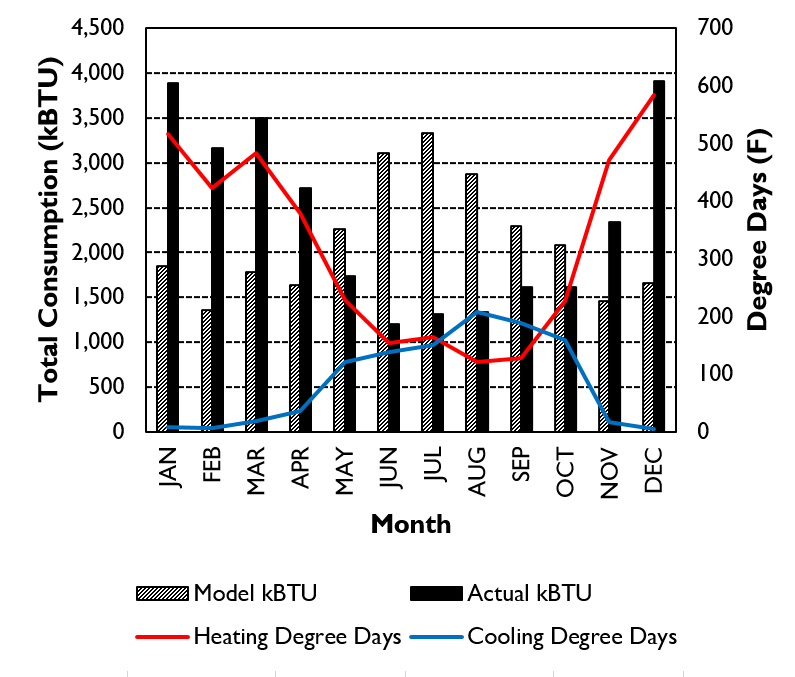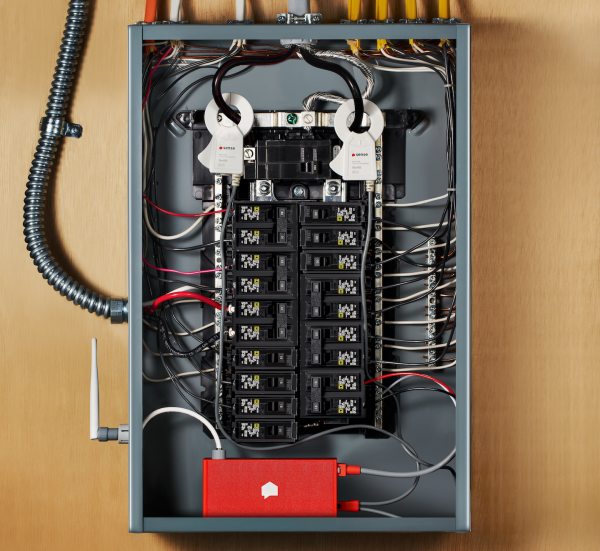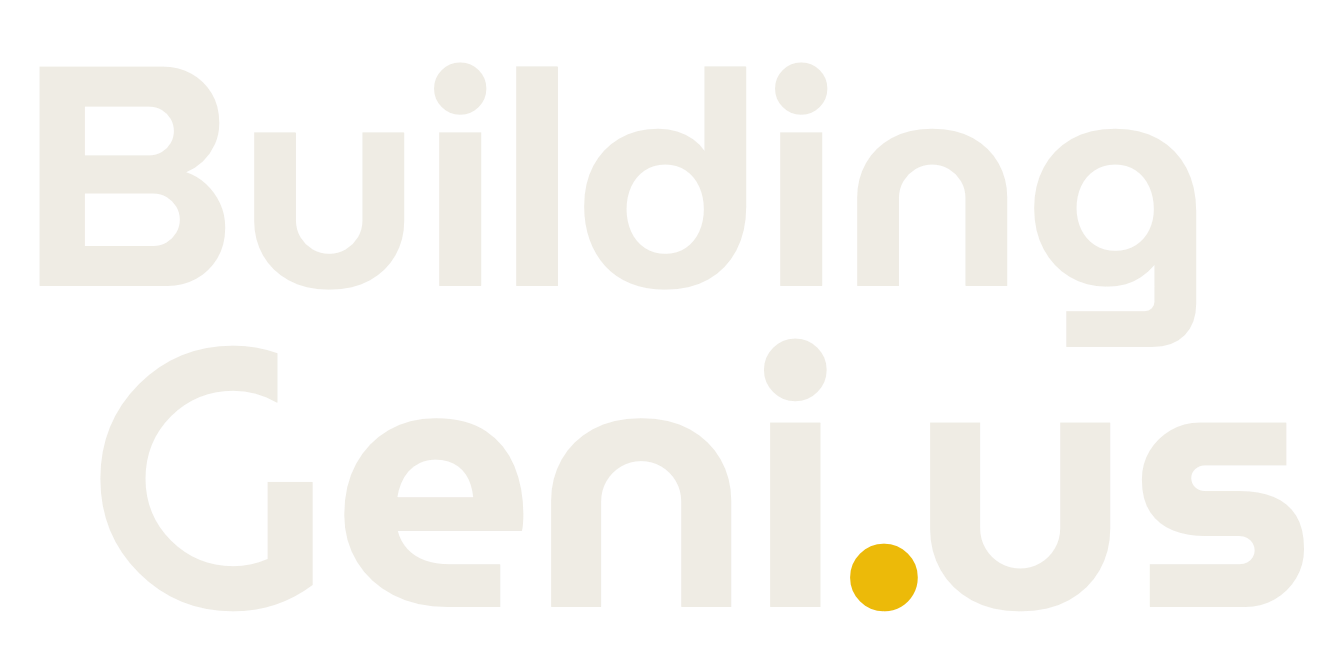Image credit: Sense, a home energy monitoring system.
The building sector nowadays relies heavily on energy modeling practices to inform design and construction of buildings. These models and their findings are also used to upgrade outdated building codes and guidelines, and push toward a more sustainable future for the built environment. This summer I worked with the Beyond Efficiency team to develop a workflow for analyzing the energy performance of our past clients. You may have heard the famous quote “Essentially, all models are wrong, but some models are useful.” This is especially the case for building energy modeling, as energy usage is individual, and relies heavily on user behavior and preferences. We were not under the false presumption that our models were able to predict the actual energy consumption of buildings 100%. However, we were still interested in getting a sense of what we can do to improve the accuracy of our predictions in the future. For instance, the graph below compares the model outputs to one year of consumption data for one of our past clients.

Figure 1 - Model Outputs vs Actual Consumption Data
It is evident here that the model has under-predicted heating demand. This under-prediction of heating demand is a recurring pattern among the projects enrolled in this study and should be studied in more detail in future. Another issue we wanted to address with this research project was the recognition of certain user behavioral patterns, and preferences that can be adjusted to improve efficiency in our projects. In the presented graph, you can see that cooling demand is negligible in the studied residence. A further investigation into this matter showed that trees heavily shaded this particular residence in summer months and thus, for the most part the owner opted not to use air conditioning.
Overall, you can essentially think of this entire project as getting a periodical checkup with a healthcare provider; however, in this case your building is the patient, and we were the provider. But what is important about these checkups? Well, you need to repeat them routinely, provide accurate information about the current status/performance levels, try to prevent problems from occurring, and address any issues as soon as possible before they become chronic. In other words, it is significantly important for building users to monitor the energy performance of their buildings closely themselves, seek professional help if needed, and adjust their behavioral patterns accordingly. After all, "Buildings don't use energy, people do!" This rather controversial statement, made by UK researcher Kathryn B. Janda a few years back, has changed the way we think about energy consumption in buildings. Up until this point in time, most targeted efforts for reducing energy consumption in buildings had been focused on building design and technology. Then came the big reveal: the behavior of a building's users may be at least as important as its design when it comes to energy use! Now, we know that energy bills in zero-energy homes are not necessarily zero, and in any community, there are some high energy consumers, some average energy consumers, and some low energy users. This means that smart buildings are probably not the proper solution to our long-term sustainability concerns, and we need smart users to occupy highly efficient buildings.
Within this framework, energy feedback is a way to turn a resource (energy) that was, until recently, more or less invisible to energy consumers into a visible one, and to create the possibility of shifting energy consumers from a passive state into an active one. For instance, consumers may notice when lights are on, but they are far less likely to be aware of how much natural gas their water heater is consuming at any given time. Energy monitoring devices are able to transform the invisible to the visible by providing consumers with a more comprehensive and nuanced understanding of their usage patterns. This meaningful boost in knowledge enables consumers to make more informed short- and long-term decisions about their energy use, from highlighting the importance of shutting off lights to showing the value of replacing an old furnace with a new higher efficiency model. In other words, the increase in feedback results in an increase in awareness or knowledge, which can foster changes in energy use behavior, and eventually decrease consumption.
In the current market, many brands offer energy-monitoring stats, especially Google Nest, Ecobee, and other smart thermostat companies. Other companies, like Sense, offer whole-home, professionally-installed energy monitors that tie into your breaker panel, and provide a more holistic look at your home's usage. With so many choices on the shelves, a homeowner might wonder do I need a home monitoring system? And even if I do, which one is going to yield the best results for me and my household in terms of energy savings, and reducing our eco footprint?
There is no simple answer to these questions. The monitoring and feedback of energy often happen either in real-time (direct feedback) or in aggregation at some later point in time (in-direct feedback). Each of these two options has its own advantages, and different customers have different preferences with regard to the volume and frequency of information flow. Aside from this, the success of a feedback system critically depends on how the information is displayed, and how consumers are motivated to interact with and use the information provided. Then come privacy concerns about sensitive data collection, and possible misuse of the collected data now or in the future. For instance, some users prefer monitors that do not include cameras, and others do not seem to be bothered with the availability of cameras or extra sensors around the residence at all.
Overall, while the benefits of providing customers with energy feedback are significant, it seems like there is no one size fits all solution when it comes to providing energy feedback. With current advances in the artificial intelligence field, future monitoring and feedback systems may be able to provide a wider range of options for users to choose their preferences regarding sharing their consumption data and receiving relevant feedback. With the availability of machine learning algorithms for detecting behavioral changes, achieving efficiency and sustainability is no longer just a dream. We can all become smart users!
Further Reading
How Technology Can Help Us Save the Environment
Home Energy Monitoring: A Guide to Reduce Electricity Usage






























